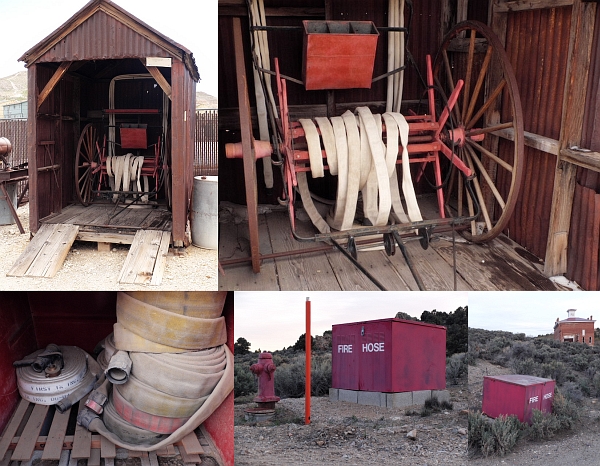In days of old, when crews were bold, and motor trucks hadn’t been invented, hydrant pressure was used to fight fire. Simply supply hose and nozzles–and a water system with hydrants–and your fire department was equipped. Reels of hose pulled by hand were common, and notably in small towns. (Though they were used in cities of all sizes as well.1)
Hose houses were small structures where reels and equipment were stored. Or just large boxes, placed beside fire hydrants, and containing hose, nozzles, and equipment. (Industrial and institutional facilities also employed such methods.)
Here are examples of both, as found while roaming Nevada last week. Top photos were taken at the Central Nevada Museum in Tonopah, and show a hand hose reel and hose house from the town of Manhattan, circa 1906. Bottom are hose houses and equipment therein in Belmont.
Belmont also has a fire station and, from the size of the building, at least a couple pieces of apparatus. Saw, say, four or six of these hose houses among the handful of streets that constitute the town center. There may have been a couple more.
Why have both? Belmont is the site of a ghost town, and appears to have a small quantity of residents. In the event of fire, any persons could connect and attack, and without waiting for the fire department to arrive. Or its presumably volunteer members to reach both the town and the station.
Click once or twice to enlarge:
1Hydrants and hand reels were added in Raleigh in 1887, and soon switched to horse-drawn hose wagons. Wendell used hand reels starting around 1919. Wake Forest added theirs in 1921. Zebulon added their reels about the same time.
